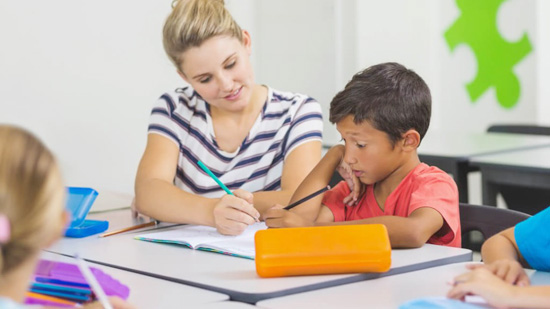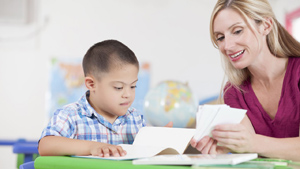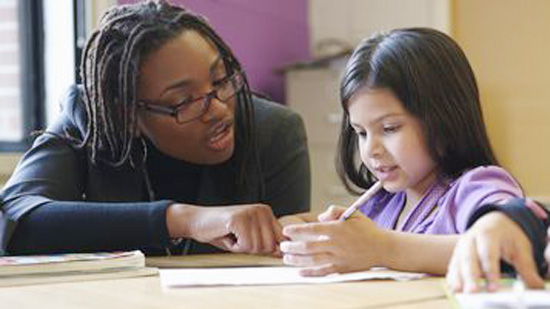Are you a teacher looking to create an inclusive classroom environment? Accommodating students with disabilities is an important aspect of education that promotes accessibility and equal opportunities for all. In this article, we will explore practical strategies and tips on how to accommodate students with disabilities in the classroom.

Understanding Students with Disabilities
To effectively accommodate students with disabilities, it is crucial to first understand their unique needs. Disabilities can vary greatly, ranging from physical impairments such as mobility limitations or visual or hearing impairments, to learning disorders such as dyslexia or ADHD. Each disability requires different support and services to ensure that students have equal access to education.
When working with students with disabilities, it is important to communicate openly and respectfully. Take the time to listen to their needs and concerns, and involve them in the decision-making process regarding their accommodations. By fostering a collaborative and inclusive environment, you can create a space where students with disabilities feel valued and empowered.
Laws and Regulations for Accommodating Students with Disabilities
In order to ensure that students with disabilities receive the necessary accommodations, it is important for teachers to be aware of the laws and regulations that protect their rights. In many countries, including the United States, the Individuals with Disabilities Education Act (IDEA) guarantees the right to a free and appropriate public education for students with disabilities. This law ensures that students receive the necessary accommodations and support services to meet their individual needs.
The Americans with Disabilities Act (ADA) prohibits discrimination against individuals with disabilities in all aspects of public life, including education. Familiarize yourself with the specific laws and regulations in your country or region, as they may vary. By understanding and following these laws, you can ensure that students with disabilities are provided with the accommodations they need to succeed in the classroom.
Benefits of Accommodating Students with Disabilities
Accommodating students with disabilities not only benefits the individual student but also the entire classroom community. By creating an inclusive learning environment, students with disabilities can fully participate in class activities, engage with their peers, and develop their academic and social skills. This not only boosts their self-esteem but also promotes a sense of belonging and acceptance.
An inclusive classroom benefits all students by fostering empathy, tolerance, and understanding. When students with disabilities are included, their classmates learn to appreciate diversity and develop a greater understanding of the unique challenges and strengths of their peers. This prepares them to be more inclusive and compassionate individuals in the future.
Creating an Inclusive Classroom Environment
Creating an inclusive classroom environment starts with designing a physical space that is accessible to all students. Consider the layout and arrangement of furniture to ensure that students with mobility impairments can navigate the classroom easily. Remove any physical barriers, such as steps or narrow doorways, and provide appropriate seating options for students with physical disabilities.
In addition to physical modifications, it is important to modify your teaching methods and curriculum to meet the needs of students with disabilities. Implement differentiation strategies that allow students to work at their own pace and provide additional support or accommodations as needed. This may include providing visual aids, using manipulatives, or breaking down complex tasks into smaller, more manageable steps.
Establish clear communication channels with students, encouraging them to voice their needs and concerns. Regularly check in with students to ensure that they are receiving the necessary support and accommodations. By fostering open communication, you can create a safe and inclusive learning environment where students feel comfortable asking for help.
Differentiation Strategies for Students with Disabilities
Differentiation is a key strategy for accommodating students with disabilities in the classroom. It involves tailoring instruction and assignments to meet the individual needs and abilities of each student. Here are some effective differentiation strategies to consider:
Flexible Instruction
Provide multiple ways for students to access and engage with the material. This can include using different modalities such as visual, auditory, or kinesthetic methods. For example, provide written instructions along with verbal explanations, or allow students to demonstrate their understanding through hands-on activities.
Individualized Learning Plans
Develop individualized learning plans (ILPs) for students with disabilities. ILPs outline specific goals, accommodations, and modifications for each student. Collaborate with the student, their parents, and any support staff to create a plan that addresses their unique needs.
Peer Mentoring
Encourage peer mentoring and collaboration in the classroom. Pair students with disabilities with their peers who can provide support and guidance. This not only helps students with disabilities feel included but also promotes a sense of responsibility and empathy among their classmates.
Flexible Assessment
Modify assessments to accommodate the diverse needs of students. Provide alternative assessment methods, such as oral presentations or projects, for students who may struggle with traditional written exams. This allows students to demonstrate their knowledge and abilities in a way that best suits their learning style.
By implementing these differentiation strategies, you can ensure that students with disabilities receive the support and accommodations they need to succeed in your classroom.
Assistive Technology for Students with Disabilities
Assistive technology plays a crucial role in accommodating students with disabilities in the classroom. It refers to any device, software, or equipment that helps individuals with disabilities perform tasks that they would otherwise struggle with. Here are some examples of assistive technology that can benefit students with disabilities:
Text-to-Speech Software
This technology reads written text aloud, helping students with visual impairments or reading difficulties access written content. It can also assist students with learning disabilities by reinforcing comprehension and vocabulary skills.
Speech Recognition Software
Speech recognition software allows students with physical disabilities or difficulties with writing to dictate their thoughts and ideas. This technology converts spoken words into written text, enabling students to express themselves more easily.
Visual Aids
Visual aids, such as charts, diagrams, or graphic organizers, can help students with learning disabilities or processing difficulties better understand and organize information. They provide visual cues and support that enhance comprehension and retention.
Augmentative and Alternative Communication (AAC) Devices
AAC devices assist individuals with communication impairments in expressing themselves. These devices can range from simple picture boards to complex speech-generating devices, enabling students with speech or language disorders to participate in classroom discussions.
By incorporating assistive technology into your teaching practices, you can ensure that students with disabilities have equal access to educational materials and opportunities.
Collaborating with Parents and Specialists
Collaboration with parents and specialists is essential for effectively accommodating students with disabilities. Parents are valuable sources of information about their child’s needs, strengths, and challenges. Establish open lines of communication with parents, involving them in the decision-making process regarding accommodations and support services.
Additionally, collaborate with specialists such as special education teachers, speech therapists, or occupational therapists. These professionals can provide valuable insights and recommendations for supporting students with disabilities in the classroom. Work together to develop individualized education plans and ensure that students receive the necessary support and services.
Regularly communicate with parents and specialists to assess the effectiveness of accommodations and address any concerns or adjustments that may be needed. By working as a team, you can provide a comprehensive and holistic approach to supporting students with disabilities.
Training and Professional Development for Teachers
To effectively accommodate students with disabilities, ongoing training and professional development for teachers is crucial. Stay updated on the latest research, best practices, and instructional strategies for supporting students with disabilities. Attend workshops, conferences, or webinars that focus on inclusive education and special education.
Seek out opportunities to collaborate with other educators who have experience in accommodating students with disabilities. Exchange ideas, share resources, and learn from one another’s successes and challenges. By continuously expanding your knowledge and skills, you can better meet the diverse needs of your students.
Examples of Successful Inclusive Classrooms
Successful inclusive classrooms can serve as inspiration and models for creating an environment where all students can thrive. Here are some examples of inclusive classrooms:
Flexible Seating
In an inclusive classroom, flexible seating options are provided to accommodate students with physical disabilities. This includes adjustable desks, alternative seating arrangements (e.g., bean bags, standing desks), and wheelchair-accessible tables.
Universal Design for Learning (UDL)
UDL is an approach that aims to make learning accessible to all students, regardless of their abilities or disabilities. In a UDL classroom, teachers use multiple means of representation, action, and expression to engage students and provide options for accessing and demonstrating knowledge.
Peer Support Programs
Inclusive classrooms often implement peer support programs, where students without disabilities act as mentors or buddies for their peers with disabilities. This helps foster a sense of belonging and support among all students, and promotes positive social interactions.
Collaborative Learning
Inclusive classrooms emphasize collaborative learning, where students work together in groups or pairs to complete tasks or projects. This allows students with disabilities to benefit from the support and expertise of their peers, while also developing their own skills and abilities.
These examples demonstrate that with the right strategies, support, and mindset, inclusive classrooms can be created and thrive.
Conclusion
Accommodating students with disabilities is a crucial aspect of education that promotes accessibility and equal opportunities for all. By understanding the unique needs of each student, following relevant laws and regulations, and implementing effective strategies, teachers can create an inclusive classroom environment. From modifying teaching methods to collaborating with parents and specialists, every effort counts in ensuring that students with disabilities feel included and empowered in the classroom. Together, let’s create a learning environment where everyone can participate and succeed.



